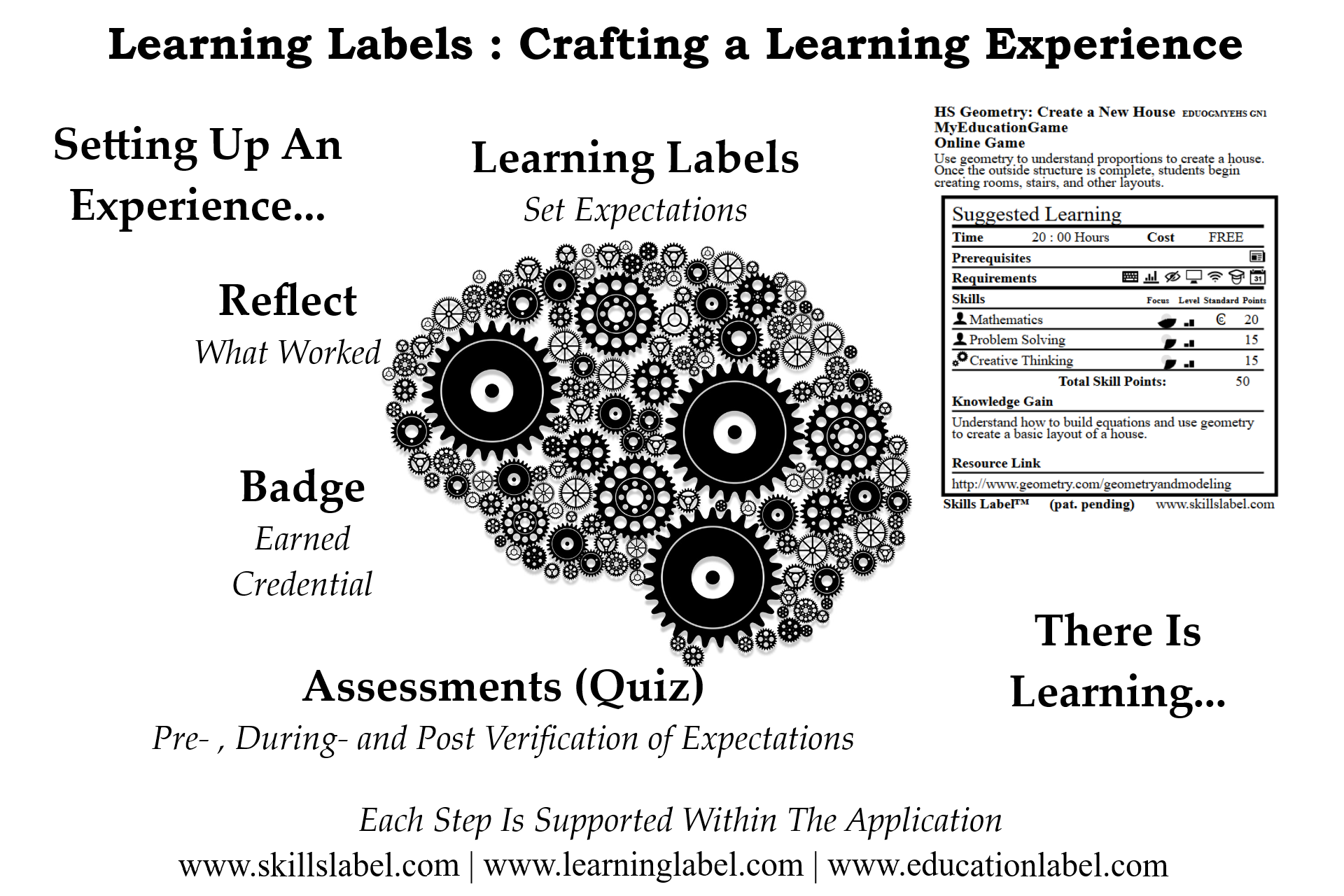As teachers and professors scramble to setup online classrooms, they might feel rushed or forced to adopt a learning management system (LMS). In many cases, the decision is influenced by what their school, college, or university mandates; the LMS might be: Google Classroom, Canvas, Moodle, Blackboard, or a myriad of other ones. I wanted to introduce the learning labels systems as a ‘light weight’ LMS solution.
The learning labels system includes much of the basic functionality of LMS. A teacher / professor creates an account in a minute (not requiring institutional support). This is some of the basic functionality (here is a link to a video):
- Create labels. Defines learning expectations, ROI, and environment for an assignment or task.
- Create quizzes. Quick assessments, which are placed before, during, and/or after a task. The system auto grades the submissions.
- Create badges. Graphics (PNGs), which get retrieved as expectations are verified.
- Create lesson plans. Connect a series of labels together based on performance.
- Grading. For tasks which include other assessments (beyond quizzes), there is functionality to grade each learner.
- Personalized learning. System supports personalized learning in three ways:
- Students navigate through a series based on their own performance.
- Assign tasks directly to students.
- Assign tasks to a syllabus (course or project). Let students choose (3 of 10, for example).
- Standards. Incorporate education, higher education, and training standards into expectations.
- Dashboard. Advanced, responsive interface to manage a collection of labels.
- User Interface. Similar, simple dashboard for learners to manage their assigned tasks.
But the huge value proposition for learning labels is to standardize defining and representing learning expectations on a task level (not necessarily to manage a classroom); in fact, the idea is to get learning labels to work with all LMSs. Currently, there is a single click integration with Google Classroom as an assignment.
Furthermore, learning labels are meant to extend beyond teachers and professors creating them for assignments. They define learning for any experience. So, online and print book publishers, VR and game creators, and activity planners build labels for their resources.
The application is designed to have a single learning label for each resource. As professors and teachers find a label that they want to include in a lesson plan, they simply ‘clone’ the label. This gives them all the above functionality, but they cannot change the underlying learning expectations. Skill Points TM and all the factors supporting the algorithm remain constant.
So, there could be significant upside if the producers of education resources connect with teachers and professors using a common, uniform format – learning labels. In addition, learning labels are readable to all parties – particularly the learners.
